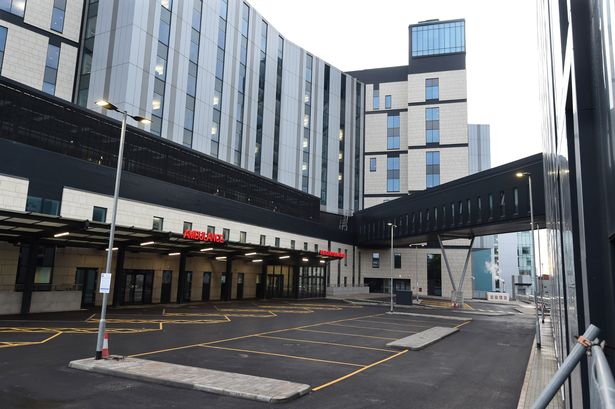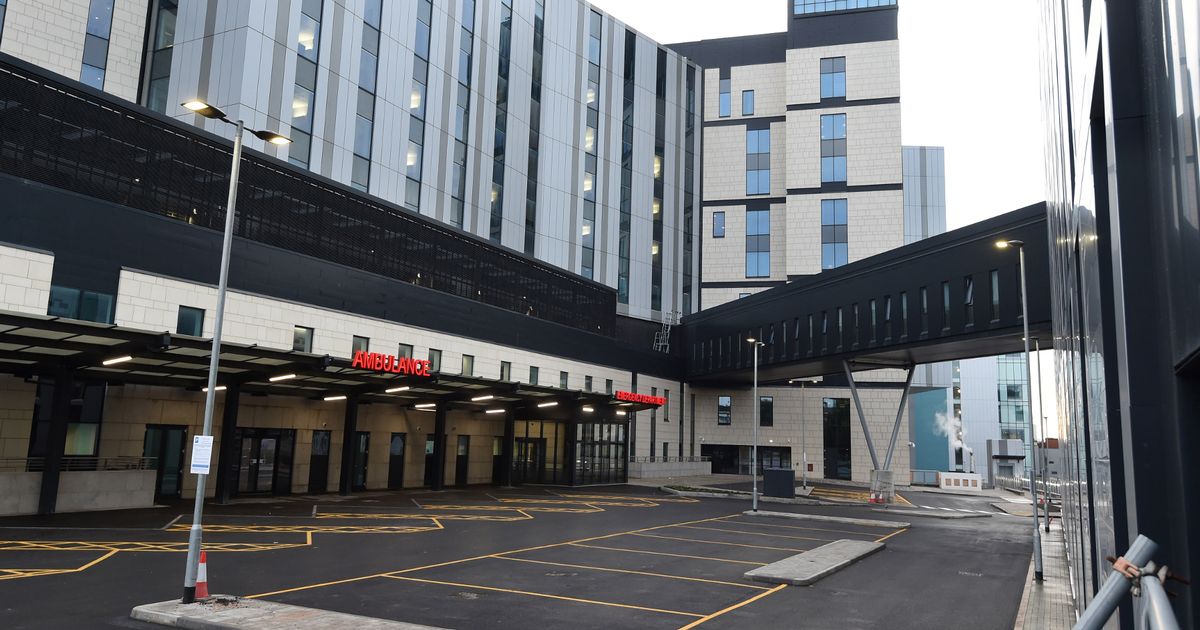The Care Quality Commission (CQC) has given its latest assessment of Liverpool’s flagship health facility The Ambulance and Emergency Department entrance at the new Royal Liverpool Hospital on Low Hill(Image: Andrew Teebay Liverpool Echo)
The Ambulance and Emergency Department entrance at the new Royal Liverpool Hospital on Low Hill(Image: Andrew Teebay Liverpool Echo)
Urgent and emergency care services at Liverpool’s flagship hospital have made improvements following an inspection by health watchdogs. The Care Quality Commission (CQC), has found improvements in two services run by Liverpool University Hospitals NHS Foundation Trust, following unannounced visits in October and December last year.
CQC carried out an unannounced inspection of urgent and emergency care services at University Hospital Aintree in December, as well as an inspection of medical care, including older people’s care, at New Royal Liverpool University Hospital in October, as part of CQC’s routine monitoring of services.
As a result of its assessment last winter, urgent and emergency care services at University Hospital Aintree, has improved from inadequate to good overall and for being well-led. Responsiveness has moved up from inadequate to requires improvement, and safe and effective practices have been marked up from requires improvement to good. Caring has been re-rated as good.
The overall rating for University Hospital Aintree remains requires improvement. The improvements found in medical care services at New Royal Liverpool University Hospital, means their overall rating has moved up from requires improvement to good, as well as for being responsive and well-led.
Effective and caring have been re-rated as good. Safe has been re-rated as requires improvement. New Royal Liverpool University Hospital has been run by Liverpool University Hospitals NHS Foundation Trust since October 2019.
Karen Knapton, CQC deputy director of operations in the north west, said: “When we inspected urgent and emergency care at University Hospital Aintree, and medical care at New Royal Liverpool University Hospital, it was positive to see that significant improvements had been made since our previous inspections, and both services are now rated as good. In both services, people told us about their positive experience of the care and treatment they’d received.
“They felt staff treated them with compassion and kindness and communicated clearly to them about their care and treatment, so they could make informed decisions about their care.”
Ms Knapton said long waiting times were still present for a bed when patients needed to be admitted to wards, owing to pressures elsewhere in the hospital.
She added: “There were also delays with people’s care being handed over to hospital staff, when they arrived by ambulance. However, the trust is aware of these concerns and have told us about improvements they’re making to address the issues.
“The trust should be really pleased with the improvements they’ve made and their new good ratings. They should use them as a foundation to keep building on.”
Peter Turkington, executive managing director of Aintree University Hospital, said: “This report speaks volumes about the dedication and resilience of our teams in delivering high-quality patient care.
“It’s a significant achievement to improve their rating from Inadequate to Good, particularly following an inspection during a very busy winter, and our teams should be very proud of this.
“I’m pleased the CQC recognised our work with system partners to enhance services and foster a culture of continuous improvement. While challenges remain around patient flow in the Emergency Department and timely admissions, we’re working with local authorities and social care providers to speed up safe discharges and improve overall patient experience.”
Natalie Hudson, executive managing director of the Royal Liverpool University Hospital, added: “This Good rating is a result of the hard work by dedicated and highly skilled colleagues across our medical care services to make improvements since their last inspection, so that patients can be assured they are getting the best care possible. I’m particularly pleased that the CQC recognised the collaborative work we are doing with our partners, to reduce admissions and improve discharge processes, and ensure that patients receive care in the most appropriate place for their needs.
“The CQC did highlight areas for improvement around hospital acquired infections and medicines management. We are taking steps to address these and will continue to focus on these areas, but this improved rating is a significant achievement that our teams should be very proud of.”
